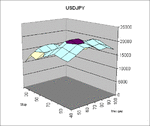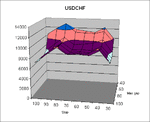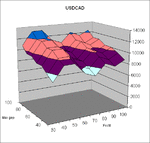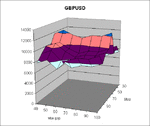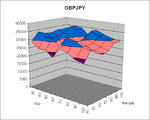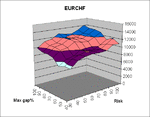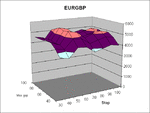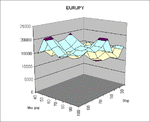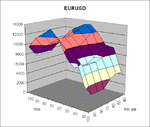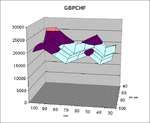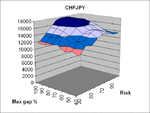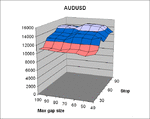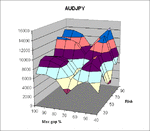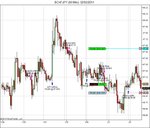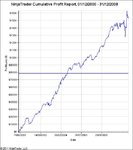Re: Gap Filler system - not satisfied with simple system, looking at improvements
Just to recap, the system to trade the gaps after the weekend from Friday's close is structurally 99% complete now.
I had to program all the forex pairs I plan on trading into one NinjaTrader7 strategy as 'additional time series'. This gives me stats for the whole set of P+L as a portfolio.
I have to decide which switches and filters to apply. There are several to choose from as I have already outlined.
(1) how much of the gap to aim for when placing target order - I haven't varied this and I don't think it's that important, but I chose 90% on the whim that I don't want to see that the price reached the target but the order was never filled.
(2) filter out the small gaps. I won't take gaps that were less than 5 points in size.
(3) filter out the huge gaps. I optimised this - 40%, 50%, 60% etc of Friday's range. It didn't make much difference, I figure I can fix this at some level or just drop the filter.
(4) whether to base the stop size on Friday's range or on the average range e.g. 21 bar daily ATR - the results were no different, decided on using he 21-bar daily ATR.
(5) what % of (4) should be used for the stop size. I optimised this too, using a % of the previous days range. I think this is the most important parameter.
(6) Friday's range can be divided into 5 zones with different probabilities that the gap will fill. If Friday's candle is 3 zones, (candlestick = 1 zone, wicks = 1 zone above & 1 zone below candlestick) the 4th zone is above the high and the 5th below the low. I don't know if the technical relevance of this in the S&P market is equally valid in forex though. I doubt it somehow.
(7) use an MA to filter out trades against the trend, maybe just a strong trend - in which case I need a trend strength indicator too
(8) another idea from
this S&P gap trader is to place the entry trade as a stop away from the Open, to benefit from any market move away from the gap initially. This requires optimisation, or perhaps just placing it half way from the Open to the stop loss.
Here are the optimised results for the basic system - with 1,2,3,4 & 5. The results include a proper drawdown figure for the account, as opposed to the dumb NinjaTrader average drawdown. It was a pain in the posterior to get it working in NinjaTrader, but now I have it frees me up from loading it into Excel every time I want a serious statistic for my results.
HTML:
Performance All Trades
Total Net Profit $152685.00
Gross Profit $409885.00
Gross Loss $-257200.00
Commission $0.00
Profit Factor 1.59
Cumulative Profit $152685.00
Max. Drawdown $-22555.00
Sharpe Ratio 0.42
Start Date 01/12/2000
End Date 31/12/2008
Total # of Trades 2232
Percent Profitable 83.83%
# of Winning Trades 1871
# of Losing Trades 361
Average Trade $68.41
Average Winning Trade $219.07
Average Losing Trade $-712.47
Ratio avg. Win / avg Loss 0.31
Max. conseq. Winners 58
Max. conseq. Losers 7
Largest Winning Trade $4660.00
Largest Losing Trade $-2850.00
# of Trades per Day 0.76
Avg. Time in Market 349.1 min
Avg. Bars in Trade 329.3
Profit per Month $1598.11
Max. Time to Recover 244.95 days
Average MAE $278.68
Average MFE $216.53
Average ETD $148.12
Plus of course the ever-useful equity curve. Put the stalk of hay between your teeth, lean on the fence and say: "Don't like the look of that last little bit"

